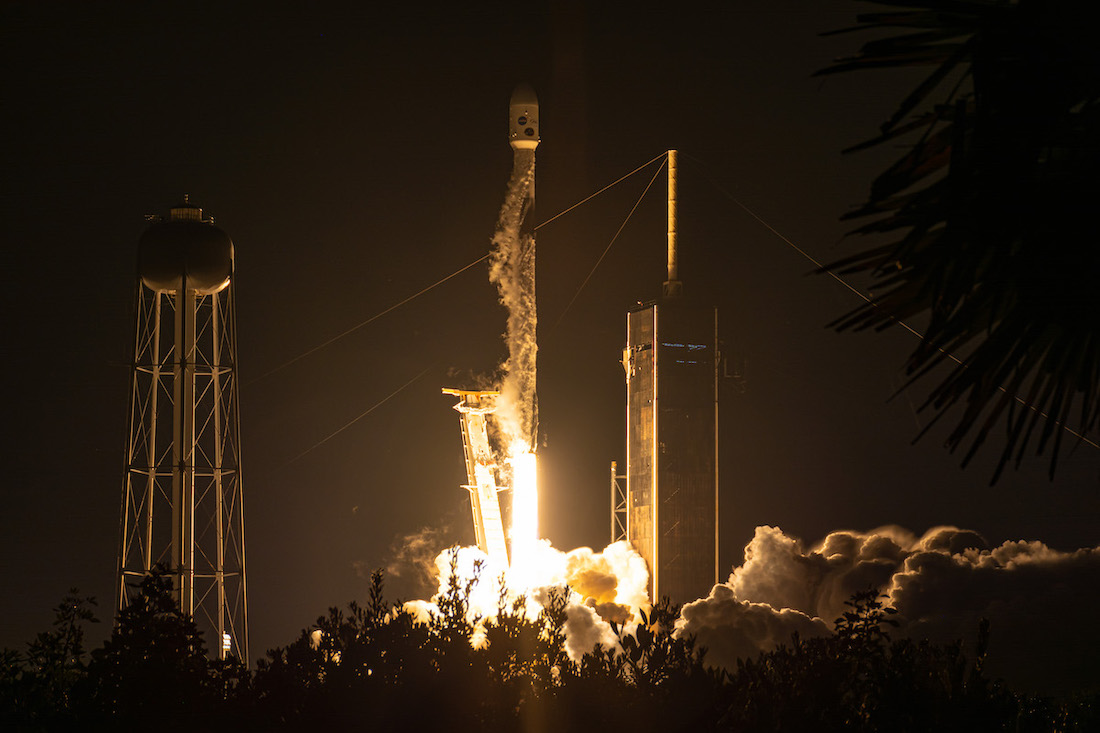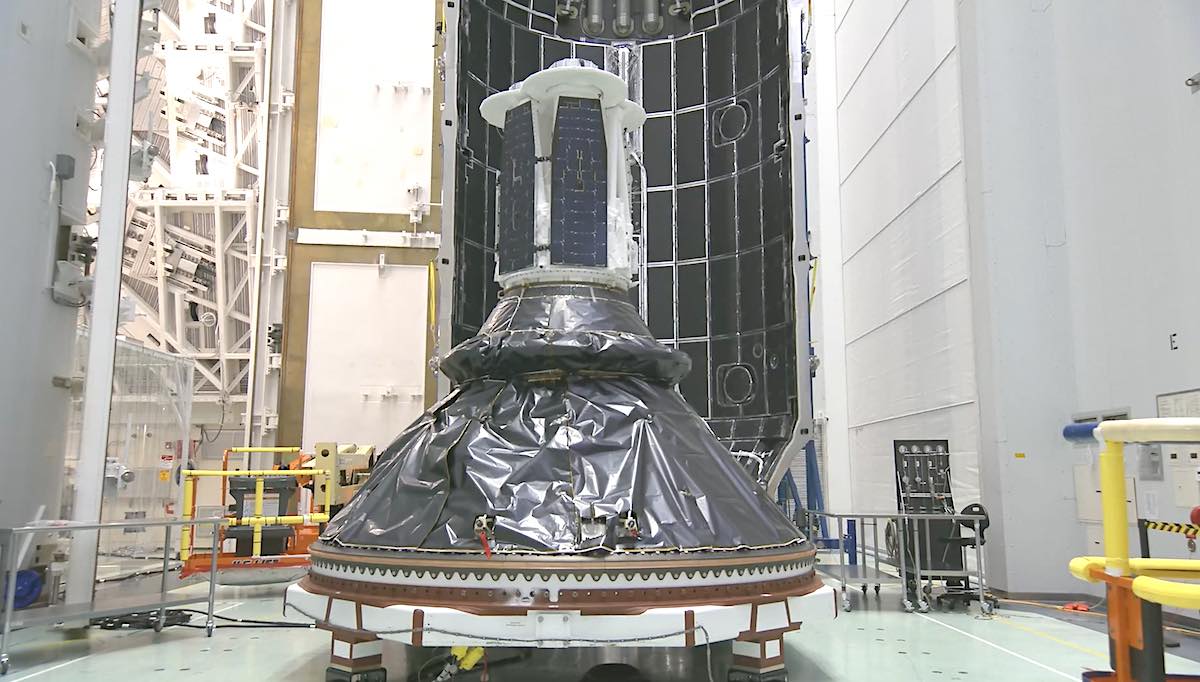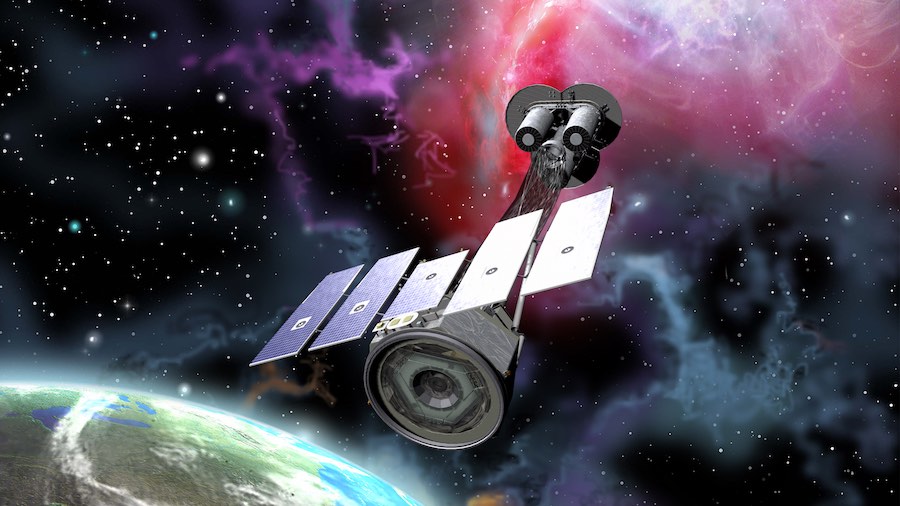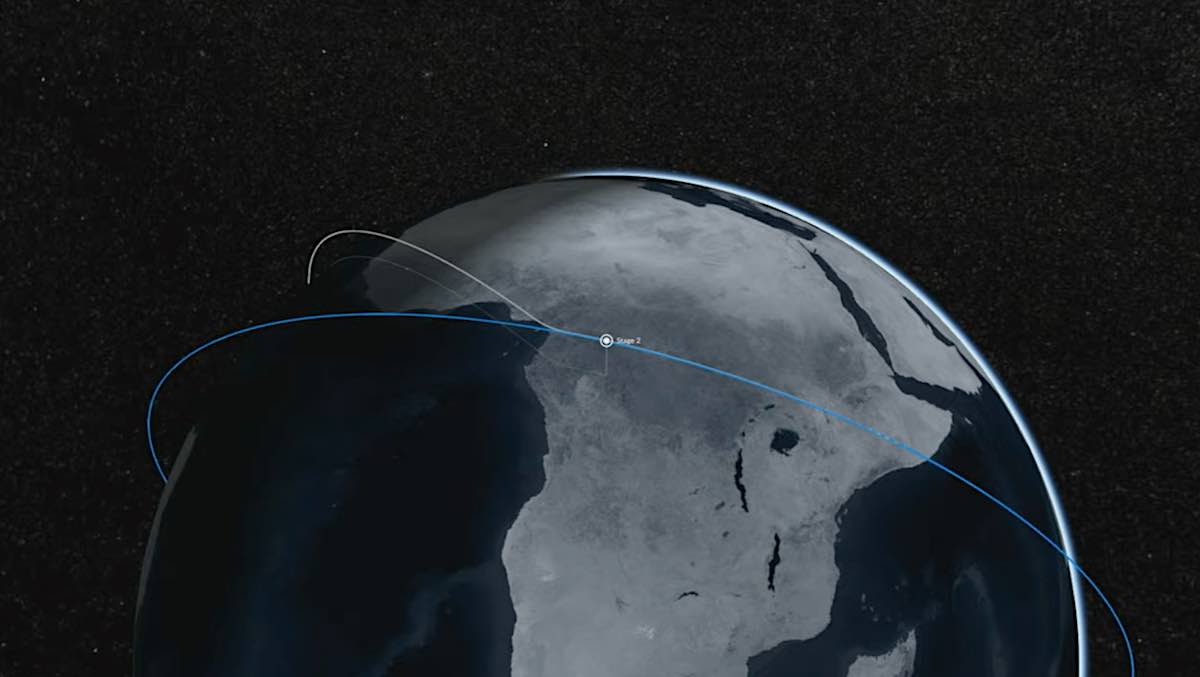
SpaceX launched a refrigerator-sized NASA X-ray observatory from Kennedy Space Center into an unusual orbit hugging the equator Thursday, beginning a $214 million mission to study black holes and super-compact neutron stars.
The successful launch sets the stage for a busy stretch of SpaceX launches before the end of the year, with as many as three Falcon 9 flights planned over a four-day period beginning Dec. 17.
NASA’s Imaging X-ray Polarimetry Explorer, or IXPE, mission is modest in size but promises to open a new window into the structure and behavior of collapsed stellar skeletons, such as black holes and neutron stars.
IXPE launched atop a SpaceX Falcon 9 rocket at 1 a.m. EST (0600 GMT) Thursday from pad 39A at NASA’s Kennedy Space Center in Florida.
Heading due east, the 229-foot-tall (70-meter) launcher climbed through a starry night sky with 1.7 million pounds of thrust from its nine Merlin engines.
Two-and-a-half minutes after liftoff, the Falcon 9 jettisoned its first stage booster and ignited a second stage engine to continue the climb into orbit. The reusable first stage, designated B1061 and making its fifth flight, returned to an on-target landing aboard a football field-sized ship positioned around 400 miles (650 kilometers) east of Cape Canaveral in the Atlantic Ocean.
The second stage, meanwhile, turned off its engine about eight minutes into the mission after placing the IXPE spacecraft into a preliminary parking orbit. A second firing about 29 minutes after launch steered IXPE into its operational orbit about 373 miles (600 kilometers) over the equator.
That set the stage for deployment of the 727-pound (330-kilogram) IXPE spacecraft about 33 minutes after liftoff. Moments later, NASA confirmed the satellite’s solar panels deployed and ground teams established contact with the spacecraft.

The IXPE mission is part of NASA’s line of small explorer-class science missions, with cost caps and highly-focused research objectives. IXPE will measure the polarization of X-rays coming from distant cosmic sources, such as black holes, neutron stars, and other objects inside and outside our own Milky Way galaxy.
“IXPE is going to open a new window on the X-ray sky, that of imaging polarimetry,” said Brian Ramsey, the mission’s deputy principal investigator at NASA’s Marshall Space Flight Center in Alabama. “That’s going to give us two completely new measurements that are going to help us understand how some of the most dramatic and energetic events in the universe take place.”
The spacecraft carries three identical X-ray telescopes to focus incoming X-rays onto state-of-the-art detectors supplied by NASA partners in Italy.
“We’re looking at black holes, exploding stars,” Ramsey said. “We’re looking at very intense magnetic fields, a thousand million million times the magnetic field of the Earth. So we’re very excited about this mission. We’re very anxious to get on orbit and start probing the mysteries of these very exotic X-ray sources.”
After separating from the Falcon 9 rocket, IXPE will open its solar arrays and then extend an origami-like boom about a week after launch. The mission’s three X-ray mirror modules are mounted on the tip of the extension, which will give the satellite a length of about 17 feet (5.2 meters) end-to-end.
The mirrors will focus X-ray light back on detectors on the main body of the spacecraft.
IXPE is one of several X-ray astronomy missions in NASA’s portfolio, but it’s the first tuned to measure the polarization signal of X-ray light. Previous telescopes, which must in space to detect cosmic X-rays, have imaged X-ray sources in high angular resolution, measured their spectroscopy, or chemical fingerprints, and studied the time variation of X-ray signals.
“By doing this mission, we are adding two variables to the astrophysics toolkit to understand these sources,” said Martin Weisskopf, IXPE’s principal investigator at Marshall. “That’s the degree of polarization, and the direction associated with polarization.”
“Photons come with this exotic property that’s called polarization,” said Luca Baldini, the Italian co-investigator for the IXPE mission from the National Institute for Nuclear Physics in Pisa, Italy. “Polarization has to do with the direction of the plane where the electric field of the X-ray oscillates. When an X-ray interacts with our detector, what happens is the photon disappears and then an electron appears in its place. What we’re trying to do is to follow the footsteps of this electron and reconstruct the direction of emission.”
The information will tell astrophysicists about the extreme environments around black holes and supermassive objects, including the supermassive black hole at the center of the Milky Way galaxy.
NASA is funding IXPE for a two-year primary mission, which the agency says adds up to $214 million, including development, the launch, and operations. The spacecraft doesn’t need any rocket fuel for pointing or orbital maneuvers.

According to Weisskopf, X-ray polarization can tell scientists about the spin of a black hole. Theoretical calculations show that the degree of polarization of an X-ray signal varies with the energy of the magnetic field at its source.
“Black holes don’t have many properties, but one of them is spin,” he said. “So this is a very fascinating use of the polarimetry to determine something about the nature of its source, and that story holds true in many other cases.”
IXPE will look at a few dozen X-ray sources during its two-year primary mission, Baldini said.
They include the supermassive black hole at the center of our galaxy, known as Sagittarius A*. IXPE’s measurements may confirm whether the black hole was much brighter just a few hundred years ago, as some scientists believe, Ramsey said.
IXPE will also look at more distant targets, such as blazers at the centers of other galaxies. Blazars have powerful jets of radiation that happen to be aimed directly at Earth.
The satellite will start collecting science data in January after a month-long commissioning phase.
Small IXPE used much of the Falcon 9 rocket’s lift capability
IXPE was the lightest payload ever to get a dedicated launch on a Falcon 9 rocket. Satellites booked for dedicated rides on Falcon 9 missions can weight several tons, but IXPE filled a small fraction of the launcher’s voluminous payload shroud.
Instead of flying on a straight shot east or northeast from Cape Canaveral, as most SpaceX missions do, the Falcon 9 rocket made a hard left turn when it crosses the equator less than a half-hour after liftoff.
The Falcon 9’s second stage engine fired with the rocket flying sideways, maneuvering the IXPE spacecraft into an orbit deviating just 0.2 degrees in latitude on each side of the equator.
The maneuver to change the plane of the satellites orbit, colloquially called a “dogleg,” consumed much of the Falcon 9’s performance capability. A Falcon 9 launching to a similar altitude without the plane change maneuver could loft a payload of more than 30,000 pounds, or 14 metric tons.
Taking into account the plane change, and reserving enough propellant to return the reusable Falcon 9 booster to an offshore landing, the carrying capacity of SpaceX’s workhorse rocket shrinks to a little more than a ton.

“We launch due east out of the Cape, and then that would put us in a 28-degree inclination orbit,” said Tim Dunn, NASA’s launch director of the IXPE mission, in an pre-flight interview with Spaceflight Now. “When we hit the equator just off the coast of Africa … we do a pretty significant dogleg to take that 28 degrees out. That’s a significant plane change. But fortunately, we’re looking at about a 330-kilogram spacecraft mass, and we do have a lot of performance on the Falcon 9 rocket.
“We have significant margin, but given the mass that we’re launching, and we all know the Falcon 9 is a very high-performing vehicle, it does take a lot of its performance to zero out that 28-degree inclination.”
During the mission’s preliminary design phase, engineers assumed IXPE would launch on Northrop Grumman’s air-dropped Pegasus XL rocket. The IXPE spacecraft was originally designed to fit inside the Pegasus rocket’s payload fairing envelope.
IXPE needs to fly in an unusual equatorial orbit to minimize the X-ray instrument’s exposure to radiation in the South Atlantic Anomaly, the region where the inner Van Allen radiation belt comes closest to Earth’s surface. That will reduce interference that could affect the sensitivity of IXPE to faint astronomical X-ray sources.
“The inclination is very important to us because, in an equatorial orbit, the cosmic wave background is minimum,” Baldini said. “That’s kind of the best orbit that you can possibly shoot for in terms of the background from charged particles.”
Northrop Grumman’s air-launched Pegasus XL rocket could have sent the IXPE spacecraft into an equatorial orbit from a position over the Pacific Ocean near Kwajalein Atoll, the remote tropical staging point for four previous Pegasus missions.
But SpaceX’s much larger Falcon 9 did the job from Kennedy Space Center, and did it cheaper. SpaceX won a $50.3 million contract in 2019 to launch IXPE on a reused Falcon 9 booster, while Northrop Grumman charged NASA more than $56 million for a Pegasus launch in 2014.

The launch of the IXPE mission Thursday marked the 28th flight of a Falcon 9 rocket this year. Three more Falcon 9 missions are on SpaceX’s schedule before the end of 2021.
A batch of Starlink internet satellites is set for liftoff no earlier than Dec. 17 from Vandenberg Space Force Base, California. Then SpaceX will close out the year with a pair of Falcon 9 missions from Florida’s Space Coast — the launch of the Turksat 5B geostationary communications satellite Dec. 18, and the blastoff of a Dragon cargo mission to the International Space Station on Dec. 21.
Email the author.
Follow Stephen Clark on Twitter: @StephenClark1.
